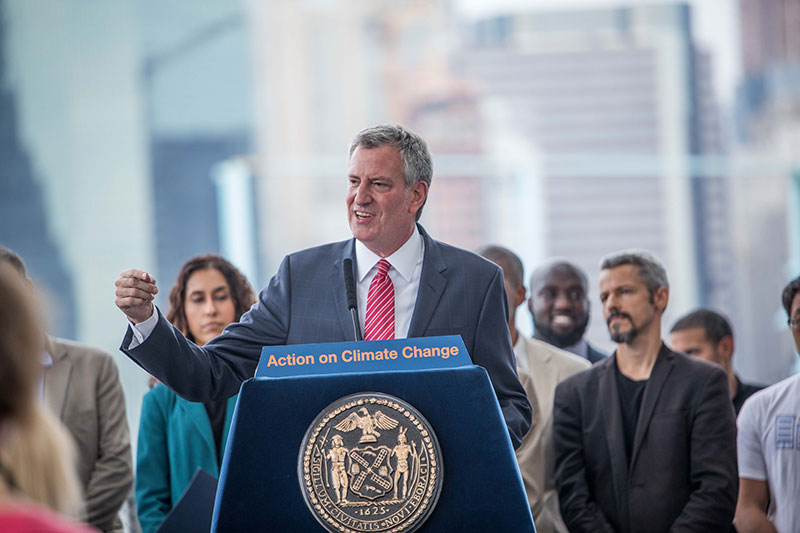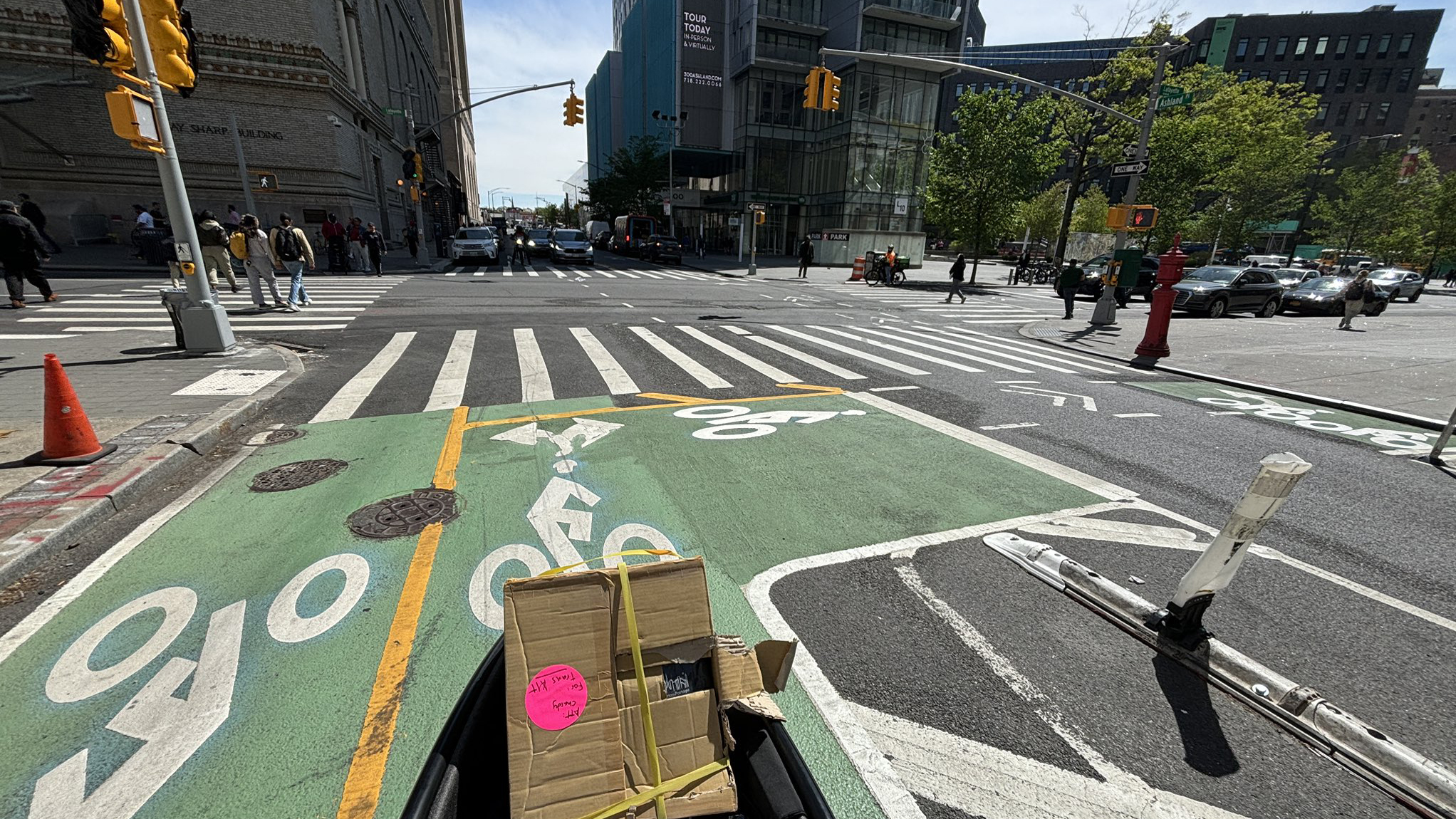Mayor de Blasio wants to be seen as a leader on climate change, rallying the nation's cities as a countervailing force to the Trump administration and its denialism. But de Blasio's strategy on climate policy lacks an essential quality of leadership: courage. The mayor is pursuing an easy political path toward lower emissions, avoiding the tough fights on transportation policy that will ultimately be necessary to achieve the city's climate goals.
Last week de Blasio announced a push to cap emissions from buildings over 25,000 square feet and force improvements to more than 14,000 buildings that account for nearly a quarter of the city's greenhouse gas emissions, according to City Hall.
Buildings are the single largest source of carbon pollution in NYC, and any climate plan has to address them. But de Blasio's splashy announcement in advance of Climate Week rehashed mandates that city officials have been discussing for years. In fact, several City Council members, including speaker Melissa Mark-Viverito, took the mayor to task for not going far enough with his clean buildings plan.
The mayor's climate pronouncements also never address the second-largest source of carbon pollution in NYC -- transportation, which accounts for one-fourth of the city's greenhouse gas emissions.
In an ironic twist, however, last week's City Hall press release said the push for clean buildings would be "equivalent to taking 900,000 cars off the road." As Doug Gordon noted on Twitter, the de Blasio administration is tacitly admitting that cutting car traffic is good for the climate without taking tangible policy steps to deliver significant reductions in transportation emissions.
According to a 2016 report from the Mayor’s Office of Sustainability, NYC has to achieve a nearly 10-fold increase in cycling mode share and attract more riders to buses.
While the administration carves out a few miles of street space for bike lanes and bus lanes each year, it doesn't add up to the bold action that meeting those targets will require. Traffic is on the rise, bicycling has plateaued, and bus service continues to lose ground to for-hire vehicles. All these trends need to start moving in a different direction, fast -- and there's no way to do that without grinding through some political conflict.
Bike commute mode-share in NYC has been stuck at 1.2 percent for three years running. To get more people on bikes, the city will have to pick up the pace on installing protected bikeways -- the kind that claim car lanes and parking spaces.
New Yorkers also continue to abandon bus service. The mayor can speed up bus travel by directing DOT to install more and better bus lanes and implement transit signal priority at more intersections. Though TSP technology is in place across the city, DOT only plans to install it for 10 additional lines by the end of 2020. City Council members are pressuring DOT to accelerate its schedule, something that's not actually a tough political lift and should be a no-brainer for the mayor.
Finally, de Blasio needs to get on board with toll reform. Though the Move NY plan would affect a relatively small number of trips to, from, and within the Central Business District, that shift will significantly reduce the city's worst traffic bottlenecks. And that will open up street space, enabling the city to accelerate the bus and bike improvements needed to meet the mayor's mode-share goals.
"The governor has finally expressed support for congestion pricing," wrote Tri-State Transportation Campaign Executive Director Veronica Vanterpool in a Sunday Daily News op-ed. "But there is still no sign that Mayor de Blasio -- whose issue du jour seems to be reducing greenhouse gas emissions -- has any plan to leverage that support."





